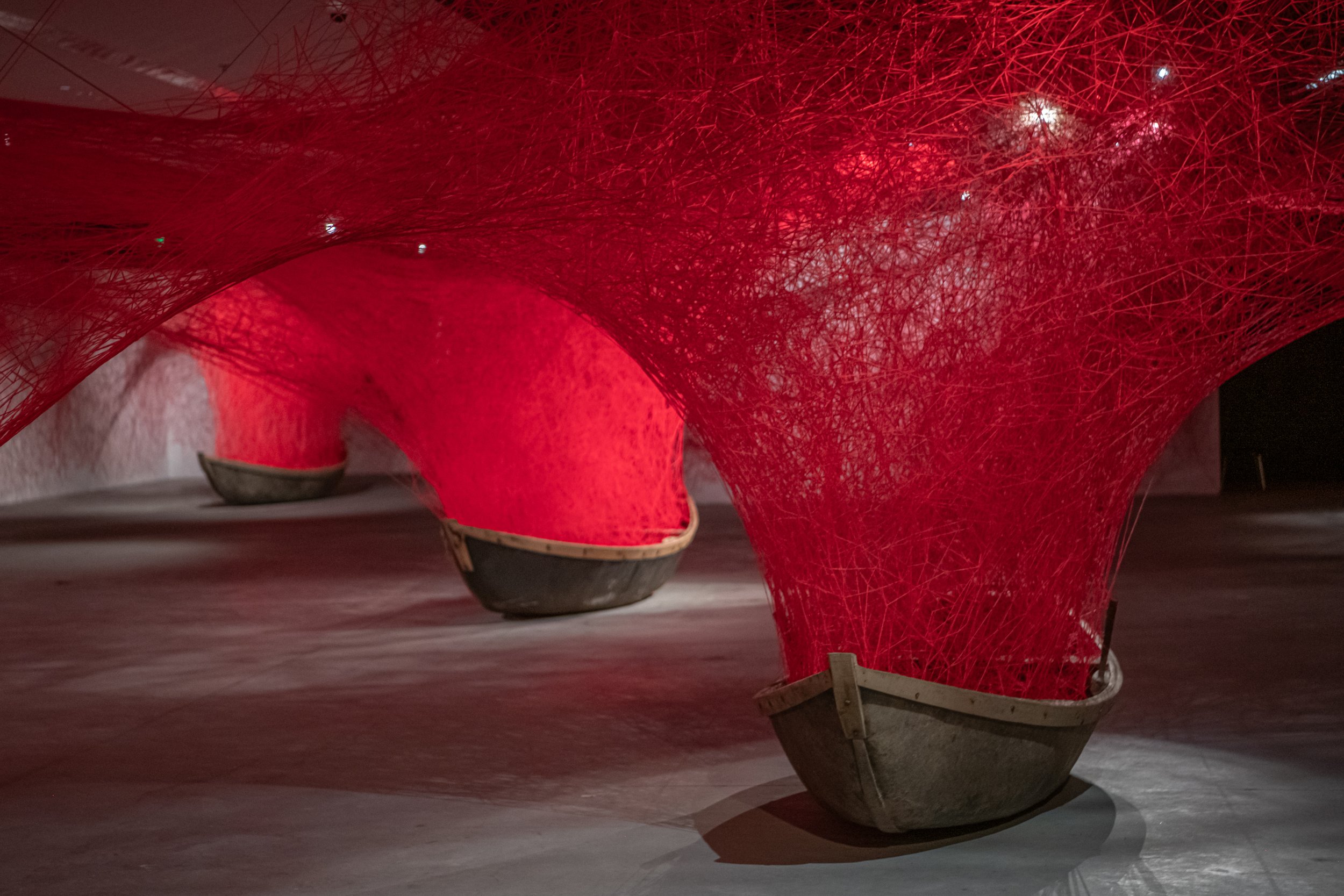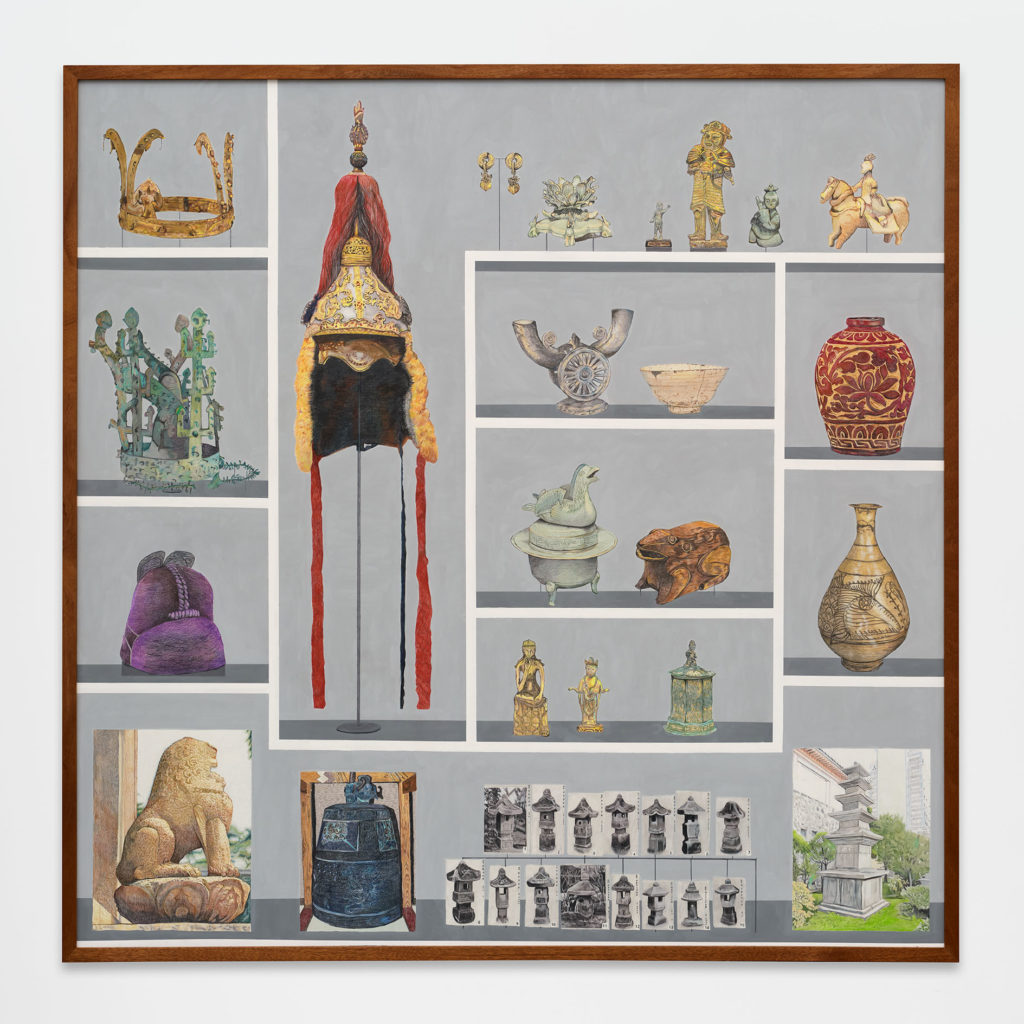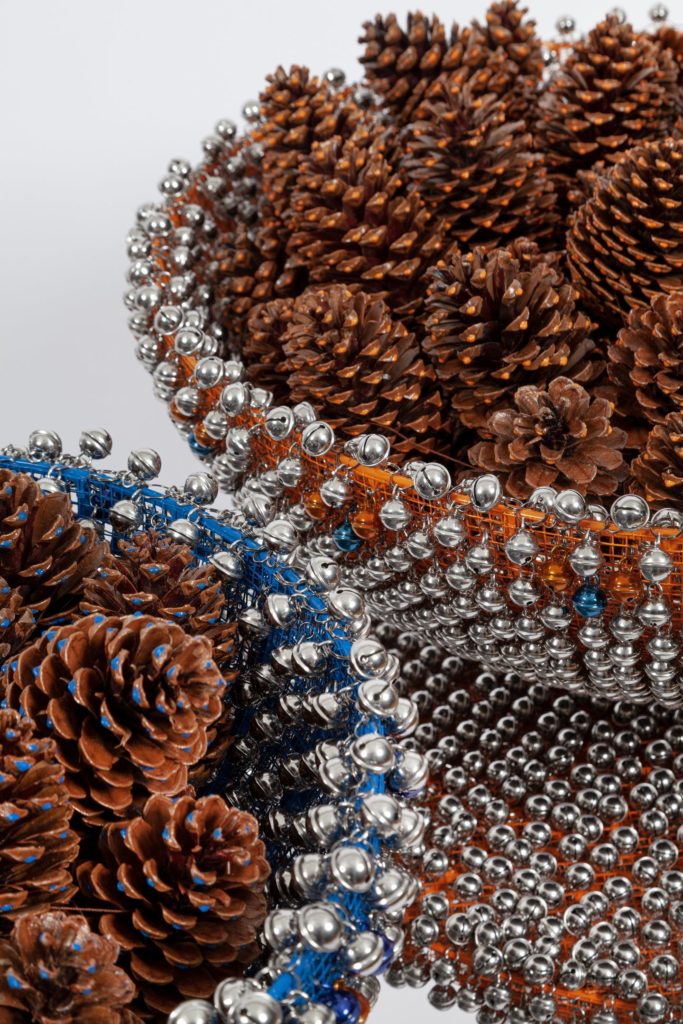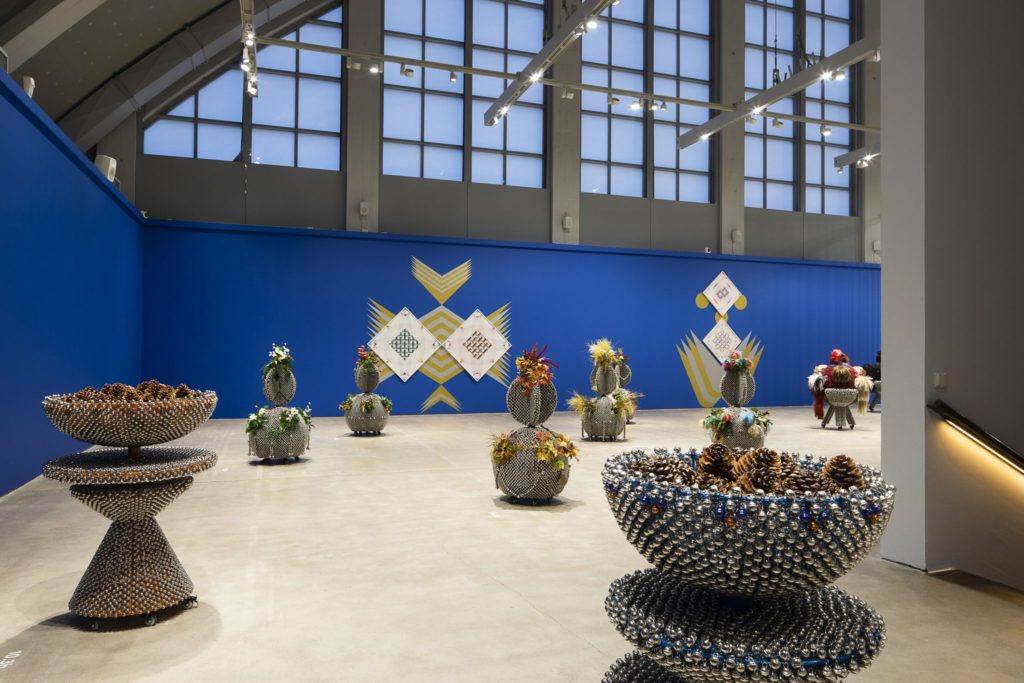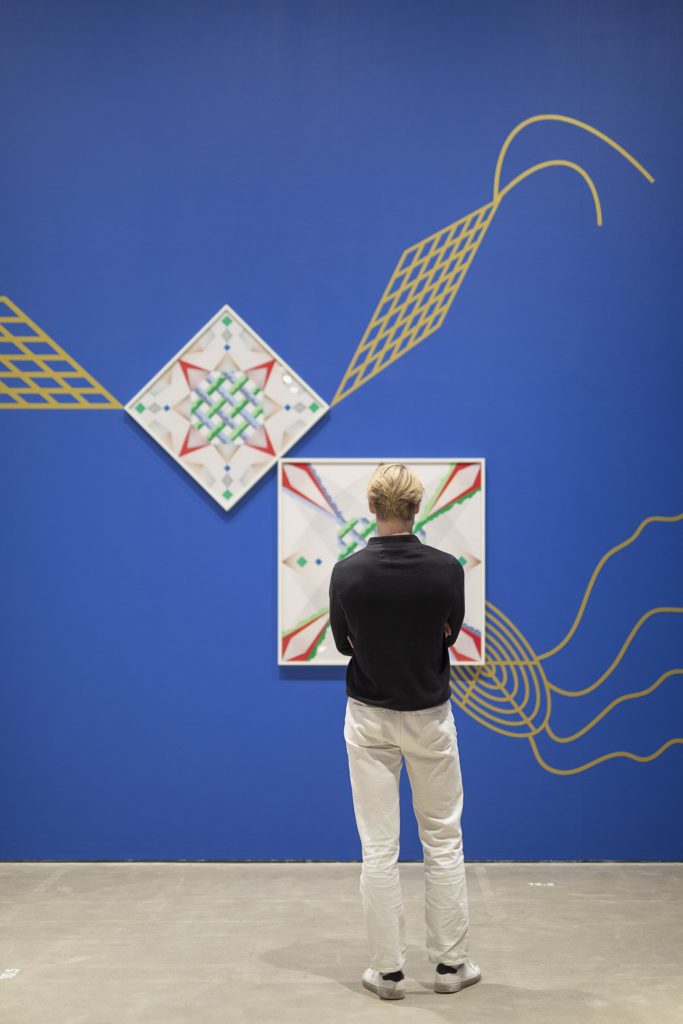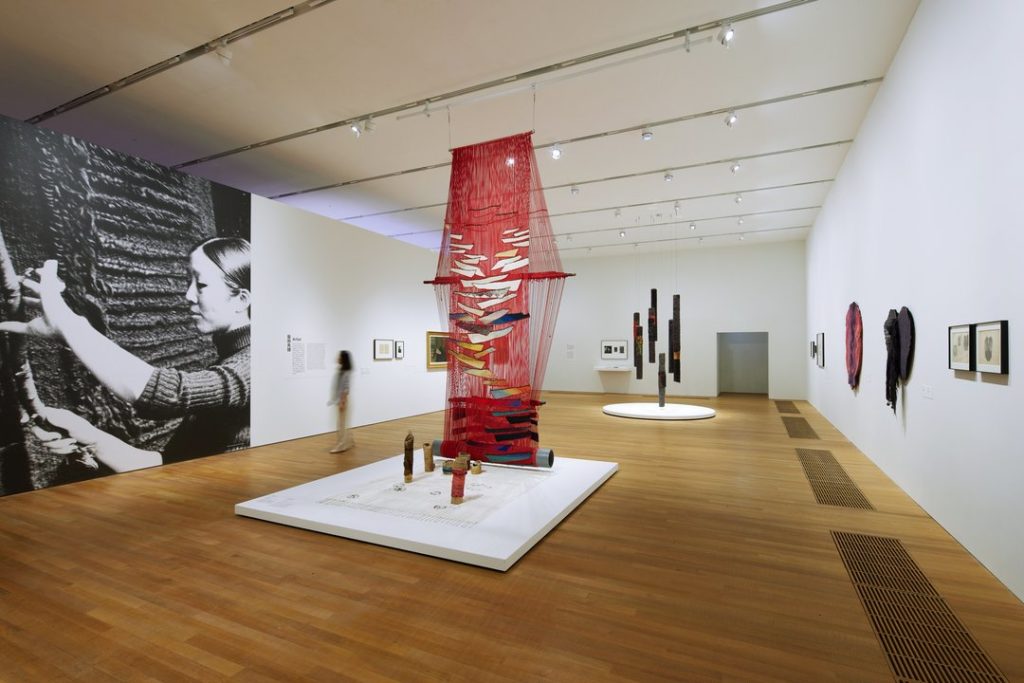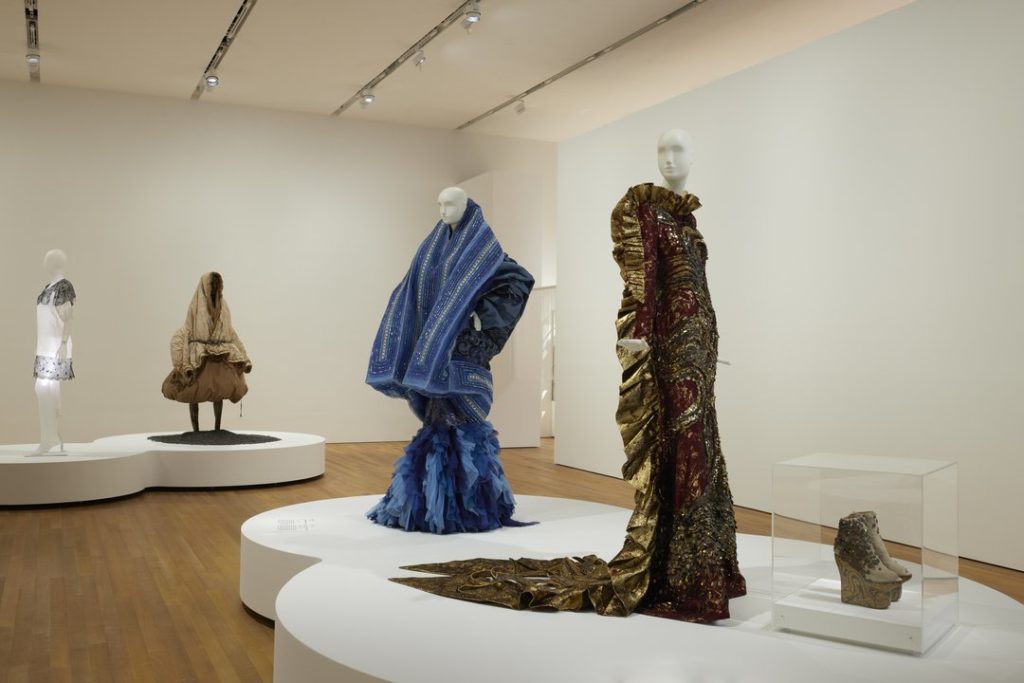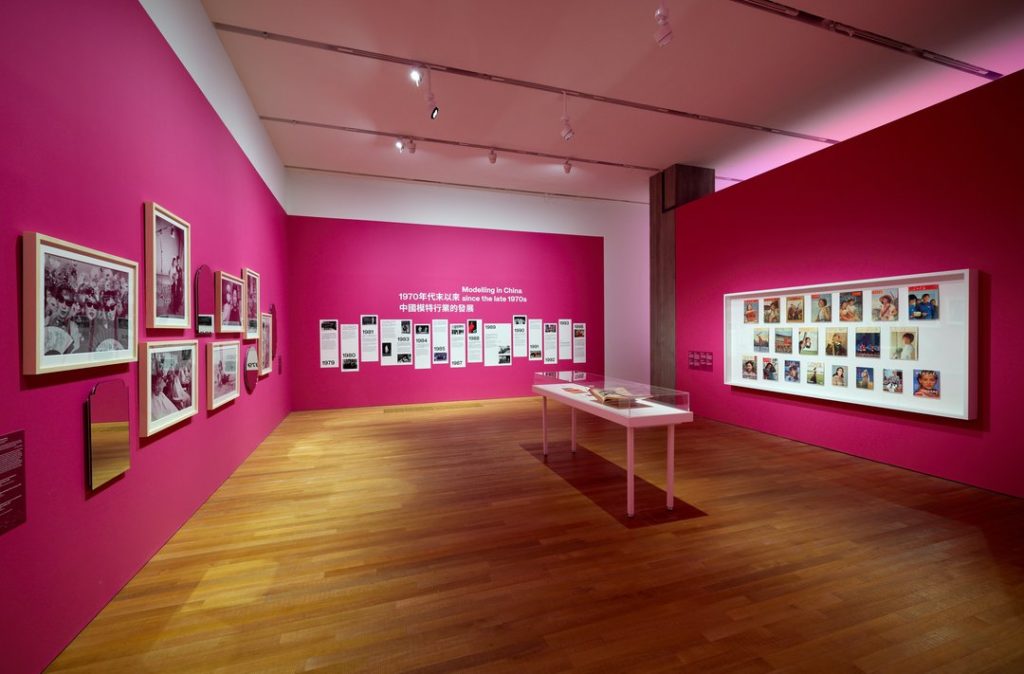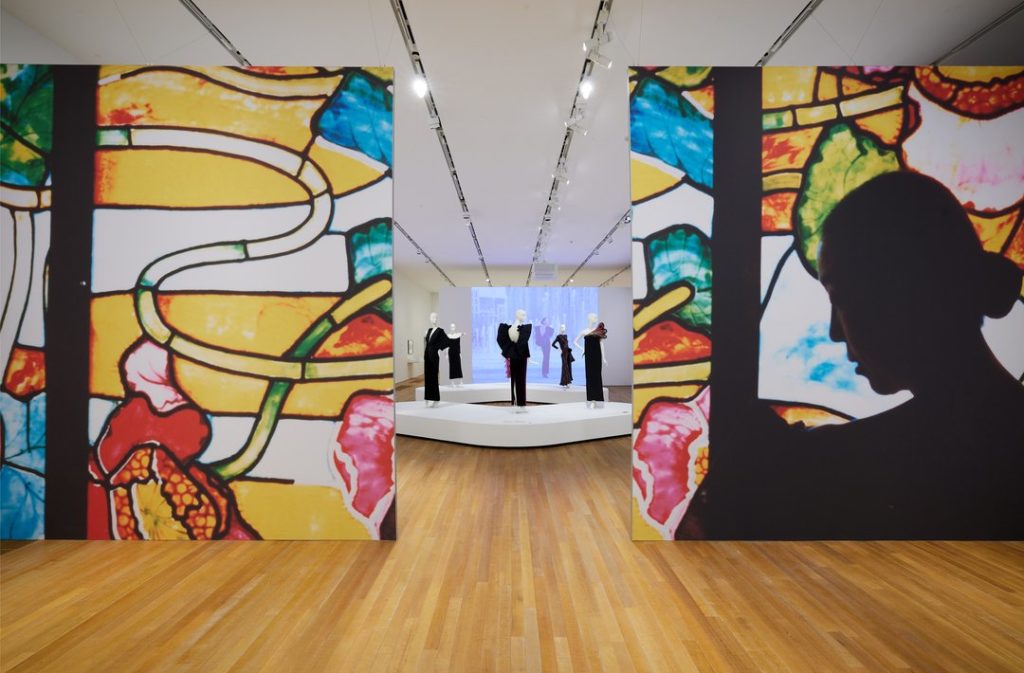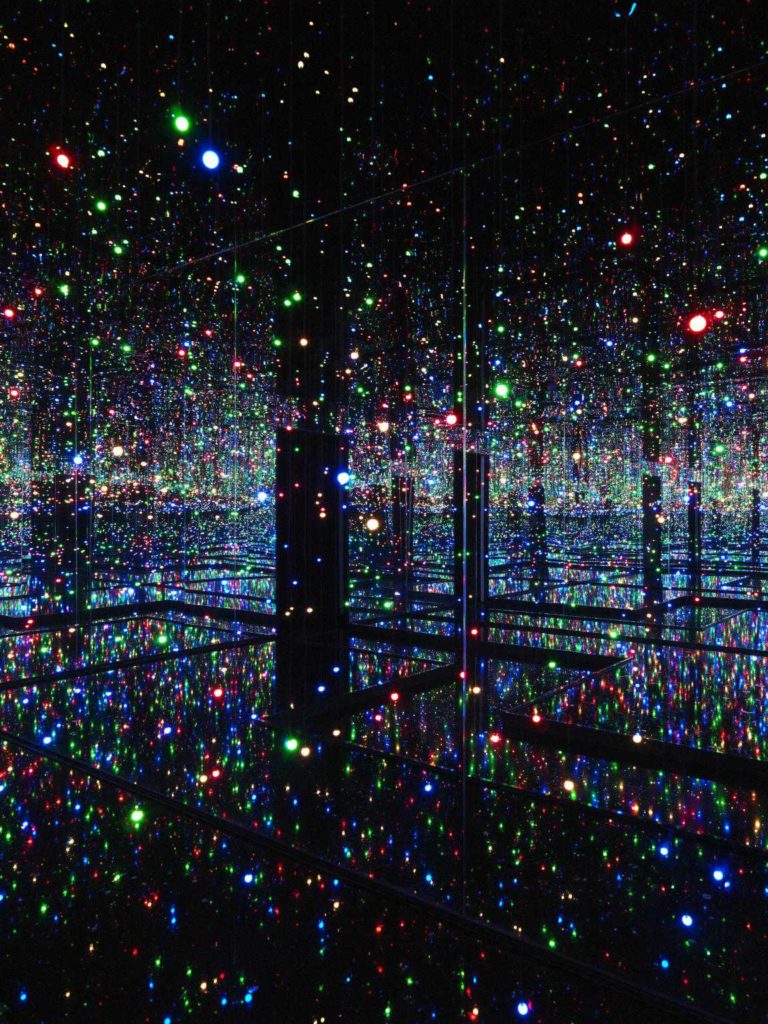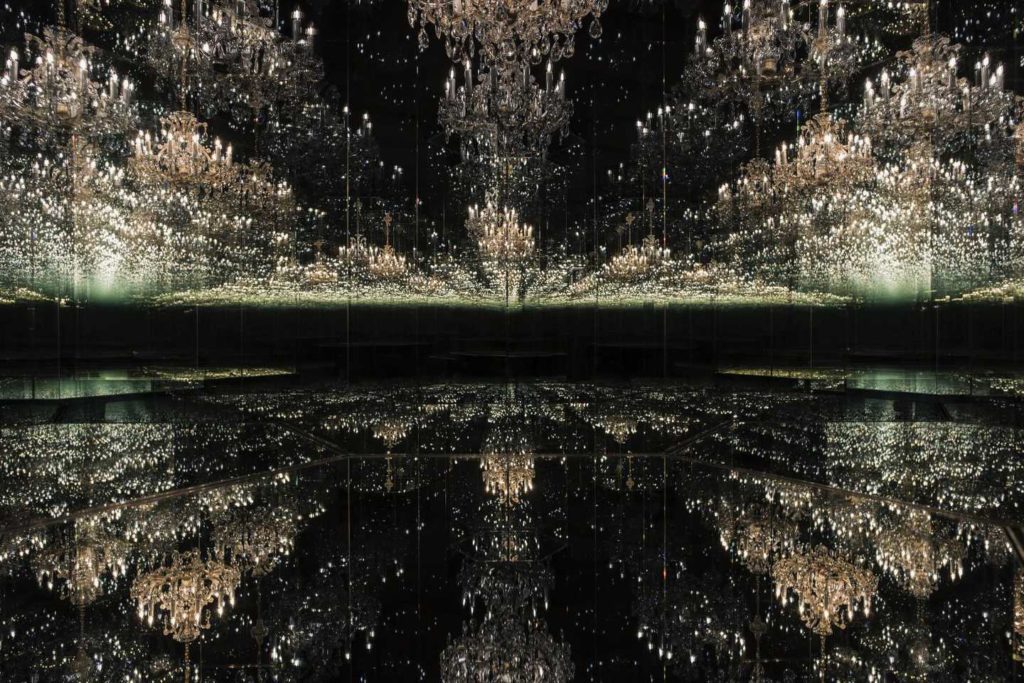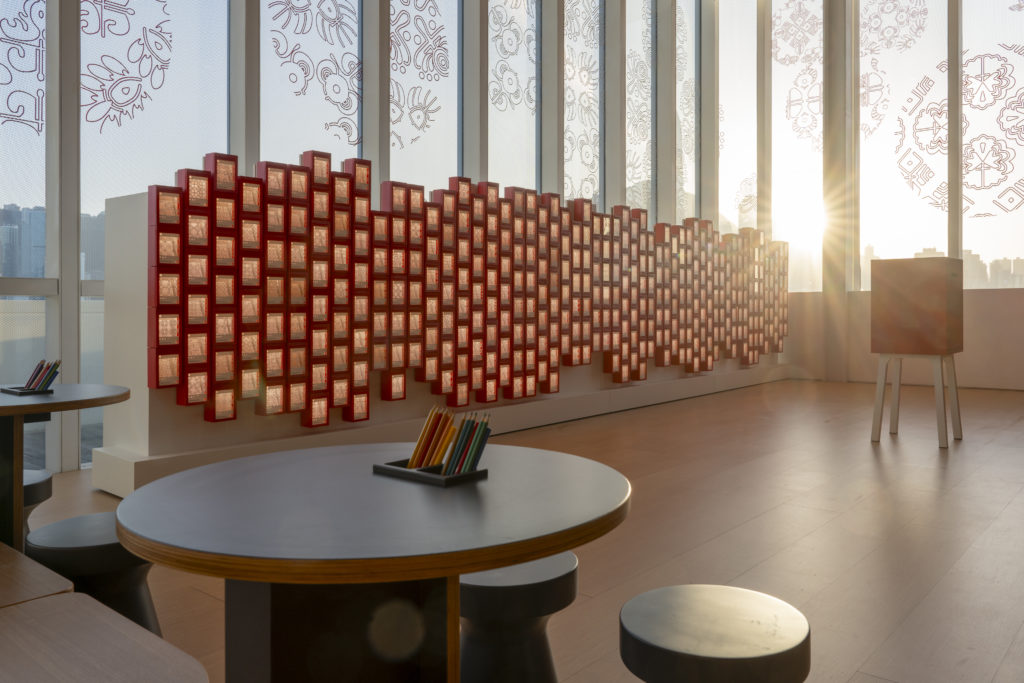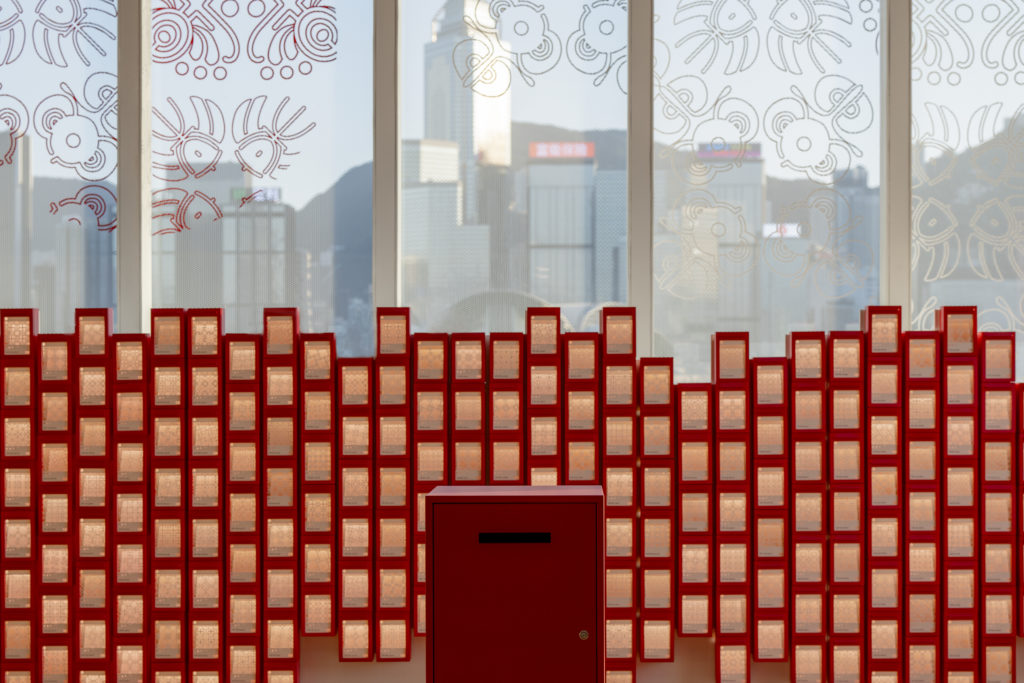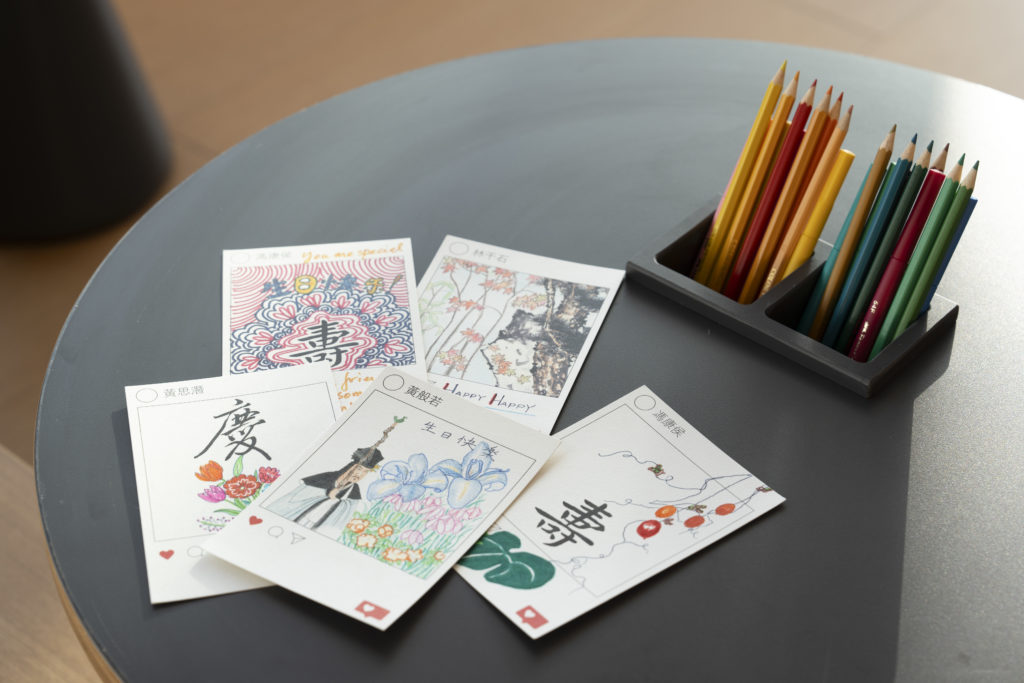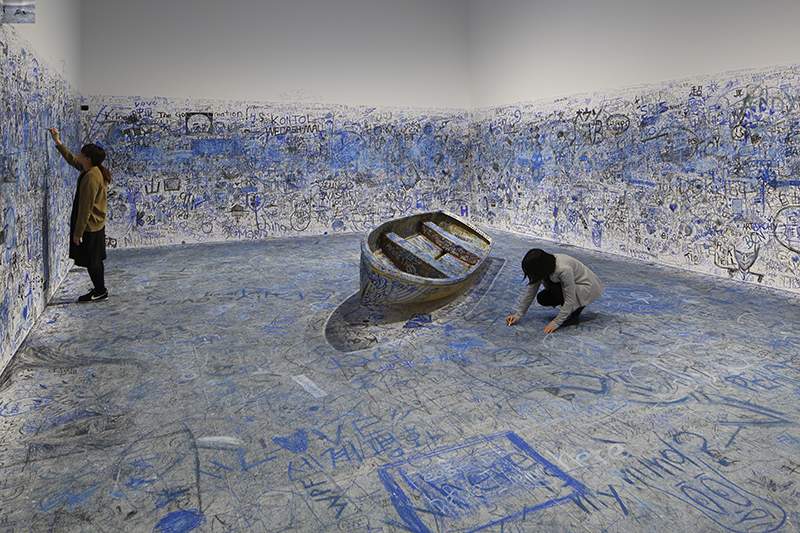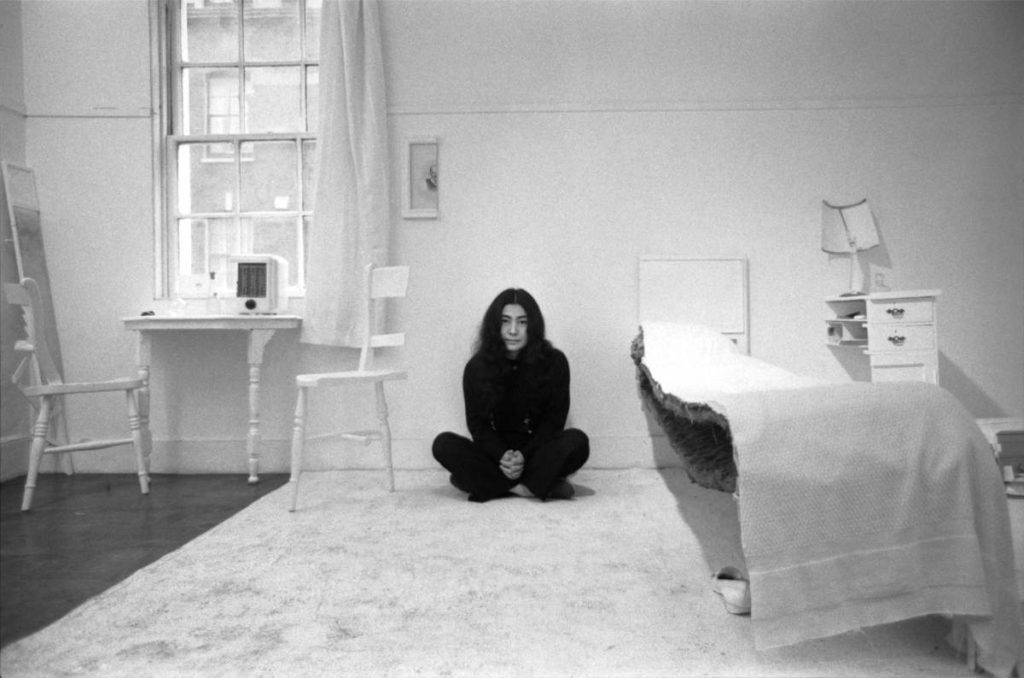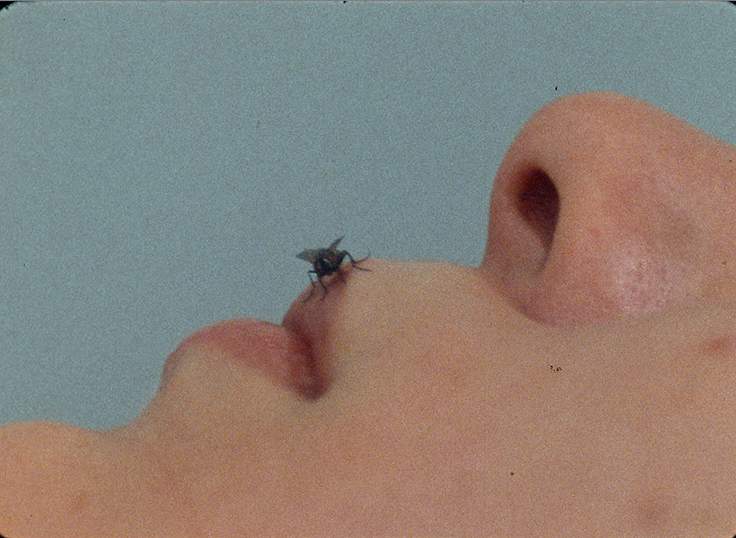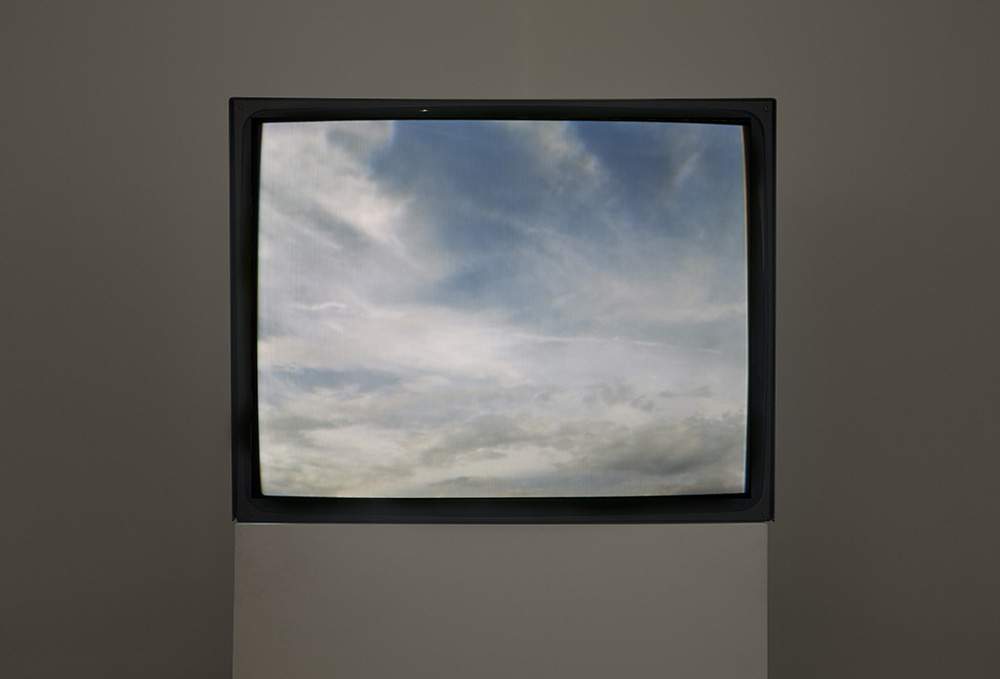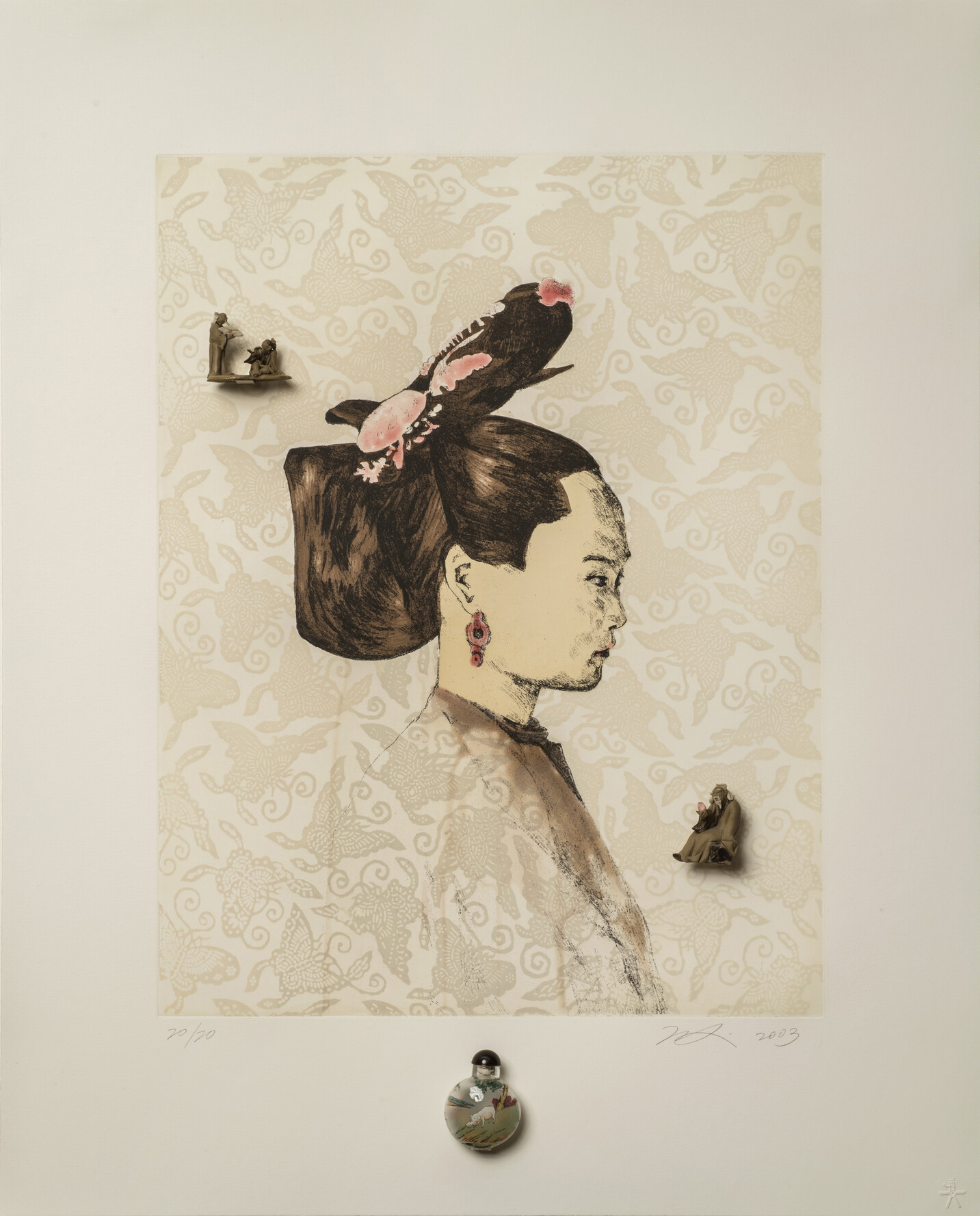Selection by Seoha Park
En écho au 8 mars, journée internationale des droits des femmes, ACA project propose un coup de projecteur sur une sélection d’expositions monographiques dédiées à des femmes artistes, présentées dans des institutions à travers le monde.
Echoing March 8, the International Women’s Rights Day, ACA project spotlights a selection of monographic exhibitions dedicated to women artists, presented in institutions around the world.
Vincom Center for Contemporary Art (VCCA) / « A Tide of Emotions » / Chiharu Shiota / 04.10.2023 – 30.03.2024 / B1–R3, Vincom Mega Mall Royal City, 72A Nguyen Trai, Thanh Xuan, Hanoi, Vietnam
Le Vincom Center for Contemporary Art (VCCA) à Hanoi présente l’exposition « A Tide of Emotions », introduisant au public vietnamien les installations de l’artiste d’origine japonaise Chiharu Shiota, qui fait aujourd’hui partie des artistes contemporain.e.s les plus actif.ve.s à l’international. Elle a exposé ses œuvres dans de nombreux musées et expositions prestigieux à travers le monde, et a notamment été choisie pour représenter le Japon à la 56e Biennale de Venise (2015). Chiharu Shiota est célèbre pour ses installations spectaculaires et élaborées à grande échelle, méticuleusement et habilement tissées à partir de centaines de milliers de fils rouges, noirs ou blancs, occupant généralement des espaces entiers.
L’exposition « A Tide of Emotions » comprend des œuvres entièrement inédites réalisées au VCCA. L’œuvre principale, qui porte le même titre, recouvre l’espace massif de VCCA d’un réseau de fils rouges – matériau représentatif de l’artiste – liés au sol à des bateaux en bois. Les œuvres de Chiharu Shiota sont une convergence de beauté tant dans la forme que dans le contenu, produisant une forte impression visuelle et contenant d’innombrables couches de signification profonde. « A Tide of Emotions », qui renvoie à des notions essentielles et universelles, deviendra un lieu significatif pour chacun et lui permettra de voir le monde d’une manière différente.
In Hanoi, the Vincom Center for Contemporary Art (VCCA) holds the exhibition « A Tide of Emotions, » introducing the installation of the Japanese female artist Chiharu Shiota to the Vietnamese public. Chiharu Shiota is one of the world’s leading names in conceptual art. Her works have been displayed in many prestigious museums and exhibitions in the world. She was chosen as the artist representing Japan at the 56th Venice Biennale (2015). Chiharu Shiota is well known for her spectacular and elaborate large-scale installations, meticulously and skillfully woven from hundreds of thousands of threads, usually occupying entire spaces.
The exhibition « A Tide of Emotions » includes completely new works made at VCCA. Notably, the main work with the same title covers VCCA’s massive space with a network of red threads, which are the representative material of the artist, linked to the wooden boats on the floor. Coming to the exhibition, the audience will enter a surreal space, connecting with a world full of memories and emotions. Shiota’s works are a convergence of beauty in both form and content, both making a strong visual impression and containing countless layers of deep meaning within. « A Tide of Emotions, » which bears a relationship to essential, universal notions, will become a significant place for everyone and enable them to see the world in a different way.
Leeum museum of art / « National Treasure » / Gala Porras-Kim / 31.10.2023 – 31.03.2024 / 60-16 Itaewon-ro 55-gil, Yongsan-gu, Séoul, Corée du Sud
Leeum Museum of Art à Séoul présente “National Treasure” de l’artiste Gala-Porras Kim. En se concentrant sur le point d’intersection entre objet ancien et système contemporain, l’exposition souhaite ouvrir une porte de réflexion sur ces deux champs différents et tisser un lien subtile entre les deux. L’exposition résonne avec la particularité du musée Leeum, qui s’identifie comme un espace où l’art traditionnel et l’art contemporain coexistent et ne cessent d’interroger leur relation. Ainsi, l’exposition “National Treasure” est composée de trois nouvelles œuvres de Gala-Porras Kim et dix trésors nationaux conservés par le musée Leeum.
Dans sa pratique basée sur la recherche, Gala Porras-Kim explore la relation entre les institutions telles que les musées, les législations sur le patrimoine culturel et les objets culturels. Ses travaux attirent notre attention sur les principes sous-jacents qui guident un musée en examinant son système de catalogage et d’indexation, ses doctrines de conservation et la manière dont sa collection est présentée. Ils mettent en lumière les textes indéchiffrables et les informations perdues, les documents incomplets et les histoires concurrentes, révélant les incertitudes qui remplissent l’espace d’un musée.
En s’appuyant sur des trésors nationaux de Corée du Nord et de Corée du Sud, ainsi que sur des objets culturels présumés avoir été enlevés pendant l’occupation japonaise, les œuvres de cette exposition examinent la manière dont l’État évalue et gère les artefacts, et comment les contextes historiques de colonisation et de division ont ajouté des significations à notre patrimoine culturel. 530 Trésors nationaux, qui rassemble des trésors nationaux de Corée du Nord et de Corée du Sud, nous rappelle que diverses entités au cours de l’histoire, telles que le Japon impérial, la Corée du Sud et la Corée du Nord, ont géré le patrimoine culturel différemment en fonction de leurs besoins. L’exposition de 37 objets coréens déracinés pendant l’occupation japonaise aborde la question de la perte de biens culturels, un défi commun aux pays soumis à la colonisation. En présentant ces œuvres aux côtés des trésors nationaux de la collection Leeum, cette exposition invite les spectateurs à réfléchir aux idées et aux principes qui régissent cette institution et à la manière dont ils sont mis en œuvre à l’heure actuelle.
Leeum Museum of Art presents ‘National Treasures’ by Gala Porras-Kim, an exhibition that explores the intricacies that arise when ancient objects, history and modern systems intersect. Showcasing Porras-Kim’s three new works based on Korean cultural heritage and ten national treasures drawn from the museum’s collection, the exhibition is also a reflection on the particularity of Leeum as a place where traditional Korean art and contemporary art coexist and continually renegotiate their relationship.
In her research-based practice, Gala Porras-Kim has explored the fraught relationship between institutions such as museums and cultural heritage legislations, and cultural objects. Her works bring our attention to the underlying principles that guide a museum by investigating its cataloging and indexing system, conservation doctrines, and the way in which its collection is presented. They shed light on undecipherable text and lost information, incomplete records and competing histories, revealing the uncertainties that fill the space of a museum.
By calling upon national treasures from both North and South Korea, as well as cultural objects presumed to be taken during the Japanese occupation, the works in this exhibition consider the ways in which the state evaluates and manages artifacts, and how historical contexts of colonization and division have added meanings to our cultural heritage. ‘530 National Treasures’, which brings together national treasures from North and South Korea, reminds us that various entities throughout history, such as imperial Japan, South Korea, and North Korea, have managed cultural heritage differently according to their needs. 37 Korean objects uprooted during the Japanese occupation addresses the issue of cultural property loss, a common challenge faced by countries that were subjected to colonization. By displaying these works alongside the national treasures from the Leeum collection, this exhibition invites the viewers to reflect on the ideas and principles that govern this institution and how it is being enacted at this very moment.
HAM / « Continuous Reenactments » / Haegue Yang / 24.11.2023 – 07.04.2024 / Eteläinen Rautatiekatu 8, 00100 Helsinki, Finlande
Partageant son temps entre l’Allemagne et la Corée du Sud depuis le milieu des années 1990, Haegue Yang (née à Séoul, en 1971) s’inspire d’un large éventail d’environnements sociaux, historiques et culturels. Sa curiosité incessante l’a conduite à des recherches philosophiques dans divers domaines, notamment les récits sociopolitiques, les phénomènes scientifiques et les perspectives anthropologiques, la plaçant aujourd’hui à l’avant-garde du monde de l’art contemporain.
Haegue Yang est réputée pour ses méthodes artisanales à forte intensité de main-d’œuvre, inspirées de diverses traditions folkloriques, et pour son mélange de matériaux organiques et synthétiques et d’articles fabriqués industriellement. Embrassant la fluidité et la contradiction, l’approche artistique de Yang transcende les frontières et ouvre de nouvelles perspectives. Combinant une riche matérialité, une complexité conceptuelle et une abondance de références visuelles, ses expositions créent des expériences sensorielles immersives dans le langage de l’abstraction visuelle.
Pour les principales salles d’exposition du HAM, le musée d’art de Helsinki en Finlande, Haegue Yang construit une arène passionnante avec des éléments sonores et performatifs pour examiner les concepts de récurrence et de reconstitution. Manifesté à travers des paires symétriques et asymétriques, des duos complémentaires et des groupes d’œuvres d’art interconnectés, Yang étudie les idées de dédoublement, de miroir et de réitération, associant et juxtaposant ainsi des notions apparemment opposées telles que l’abstraction et la figuration, la domesticité et le public, révélant leur inséparabilité.
Pour les principales salles d’exposition de HAM, le musée d’art de Helsinki en Finlande, Yang construit une arène captivante avec des éléments sonores et performatifs afin d’examiner les concepts de récurrence et de reconstitution. Par le biais de paires symétriques et asymétriques, de duos complémentaires et de groupes d’œuvres interconnectés, Yang étudie les idées de dédoublement, de miroir et de réitération, associant et juxtaposant ainsi des notions apparemment opposées telles que l’abstraction et la figuration, la domesticité et le public, révélant ainsi leur inséparabilité.
Dividing her time between Germany and South Korea since the mid-1990s, Haegue Yang (Seoul, 1971) has been gathering inspiration from a wide range of social, historical, and cultural environments. Her relentless curiosity has led to philosophical inquiries into diverse fields, including socio-political narratives, scientific phenomena, and anthropological perspectives, positioning her at the forefront of the contemporary art world today.
Yang is renowned for her labour-intensive, yet unrestricted craft-based methods drawn from various folk traditions, melding arrays of organic and synthetic materials together with industrially manufactured items. Embracing fluidity and contradiction, Yang’s artistic approach transcends boundaries and sparks fresh perspectives. Combining rich materiality, conceptual complexity, and an abundance of visual references, her exhibitions create immersive sensory experiences in the language of visual abstraction.
For HAM’s main exhibition halls, Yang builds an enthralling arena with sonic and performative elements to examine the concepts of recurrence and reenactment. Manifested through symmetric and asymmetric pairs, complementing duos, and interconnected groups of artworks, Yang investigates the ideas of doubling, mirroring, and reiterating, hereby pairing and juxtaposing seemingly oppositional notions such as abstraction and figuration, domesticity and public, revealing their inseparability.
M+ / « Madame Song : Pioneering art and fashion in China » / Madame Song / 29.07.2023 – 14.04.2024 / West Kowloon Cultural District, 38 Museum Drive, Kowloon, Hongkong
Le M+ à Hong Kong présente l’exposition “Madame Song, Pioneering art and fashion in China”, qui trace la vie et l’art de Madame Song, une figure iconique qui a transformé le paysage des arts, de la mode et de la culture populaire en Chine des années 1980 aux années 2000.
Song Huai-Kuei (1937-2006), largement connue de son vivant sous le nom de Madame Song, était une légende dans les domaines de l’art, du cinéma, de la musique et de la mode chinoise dans les années 1980 et 1990. Avec son mari, l’artiste bulgare Maryn Varbanov (1932-1989), Song a contribué à favoriser une scène créative tournée vers l’avenir et à cultiver un style de vie moderne et international en Chine à une époque où le pays était largement isolé du reste du monde pendant une grande partie de la guerre froide.
Cette exposition spéciale met en lumière les multiples identités et activités professionnelles fascinantes de Madame Song. Elle raconte sa vie et sa pratique des années 1950 au début des années 2000 et dévoile l’influence de Song jusqu’ici négligée et sous-estimée, sur la transformation de la Chine en la société cosmopolite et culturellement diversifiée qu’elle est aujourd’hui.
In Hong Kong, the M+ Museum presents the exhibition “Madame Song, Pioneering art and fashion in China” which traces the life and art of Madame Song, an iconic figure who transformed the landscape of art, fashion and popular culture in China from the 1980s to the 2000s.
Song Huai-Kuei (1937–2006), widely known during her lifetime as Madame Song, was a legend in the spheres of Chinese art, film, music, and fashion during the 1980s and 1990s. With her husband, Bulgarian fibre artist Maryn Varbanov (1932–1989), Song helped foster a forward-looking creative scene and cultivated a modern, international lifestyle in China at a time when the country was largely isolated from the rest of the world for much of the Cold War.
This Special Exhibition brings to light Madame Song’s fascinating multiple identities and professional pursuits. It chronicles her life and practice from the 1950s to the early 2000s and unveils Song’s thus-far overlooked and underestimated influence on China’s transformation into the cosmopolitan and culturally diverse society it is today.
Tate Modern / “Yayoi Kusama : Infinity Mirror Rooms” / Yayoi Kusama / 18.05. 2021 – 28.04. 2024 / Bankside, London SE1 9TG, Royame-Uni
Tate offre une chance de découvrir deux des Infinity Mirror Rooms de Yayoi Kusama, des installations immersives qui transportent le spectateur dans la vision unique aux reflets infinis de l’artiste. Infinity Mirrored Room – Filled with the Brilliance of Life est l’une des plus grandes installations de Kusama à ce jour et a été réalisée pour sa rétrospective de 2012 à la Tate Modern. Elle est présentée aux côtés de Chandelier of Grief, une pièce qui crée l’illusion d’un univers sans limites de lustres rotatifs en cristal.
Une petite présentation de photographies et d’images animées, dont certaines exposées pour la première fois, fournit un contexte historique au phénomène mondial que sont devenues aujourd’hui les Infinity Mirrored Rooms de Kusama. Née en 1929 à Matsumoto, au Japon, Kusama s’est fait connaître sur la scène internationale dans les années 1960 à New York grâce à une vaste pratique créative englobant l’installation, la peinture, la sculpture, le design de mode et l’écriture. Depuis les années 1970, elle vit à Tokyo, où elle continue de travailler de manière prolifique et de connaître une renommée internationale.
Tate presents a rare chance to experience two of Yayoi Kusama’s Infinity Mirror Rooms. These immersive installations will transport you into Kusama’s unique vision of endless reflections. Infinity Mirrored Room – Filled with the Brilliance of Life is one of Kusama’s largest installations to date and was made for her 2012 retrospective at Tate Modern. It is shown alongside Chandelier of Grief, a room which creates the illusion of a boundless universe of rotating crystal chandeliers.
A small presentation of photographs and moving image – some on display for the first time – provides historical context for the global phenomenon that Kusama’s mirrored rooms have become today. Born in 1929 in Matsumoto, Japan, Kusama came to international attention in 1960s New York for a wide-ranging creative practice that has encompassed installation, painting, sculpture, fashion design and writing. Since the 1970s she has lived in Tokyo, where she continues to work prolifically and to international acclaim.
HKMA / “Happy Birthday Likeboxes in Sunlight” / Hikoko Ito / 19.01 – 26.06.2024 / 10 Salisbury Road, Tsim Sha Tsui, Kowloon, Hong Kong
À quand remonte la dernière fois que vous avez reçu une carte d’anniversaire dessinée à la main ou en avez-vous fait une pour quelqu’un d’autre ?
Le Hong Kong Museum of Art (HKMA) présente l’exposition “Happy Birthday Likeboxes in Sunlight”, une installation artistique enchanteresse de l’artiste et architecte Hikoko Ito. Grâce aux « Birthday Likebox », le spectateur reçoit une carte d’anniversaire dessinée à la main par un visiteur précédent. En retour, il est invité à embrasser cet esprit de générosité en créant une carte d’anniversaire pour un futur visiteur, en lui transmettant les bénédictions telles qu’il les a reçues.
Cette installation présente 366 boîtes aux lettres lumineuses, chacune représentant un jour de l’année. Leur apparence, qui rappelle les publications sur les réseaux sociaux, ainsi que les ingénieusement nommées « Likeboxes » – un jeu de mots sur le fait de « liker » une publication et des lightboxes – incitent les visiteurs à contempler la nature souvent impersonnelle des interactions sur les réseaux sociaux, et à créer et partager une carte d’anniversaire dessinée à la main, imprégnée de vœux sincères.
Hikoko Ito est une architecte et artiste de Hong Kong. Depuis 2012, elle rejoint son père (l’artiste Sun Chan) pour explorer de nouvelles représentations visuelles des caractères chinois, et a exposé à Hong Kong et à l’étranger. Les motifs de caractères chinois décoratifs et cryptés de Hikoko traversent les frontières entre l’image et le texte, et se manifestent dans divers supports tels que des imprimés, des œuvres d’art murales et une collection de foulards et de vêtements d’une marque internationale. Récemment, Hikoko a transformé ses motifs en œuvres 3D allant du mobilier aux installations artistiques en passant par l’art public à grande échelle, qui lui ont valu de nombreux prix.
When was the last time you received a hand-drawn birthday card, or crafted one for someone else?
The Hong Kong Museum of Art (HKMA) presents « Happy Birthday Likeboxes in Sunlight », an enchanting art installation by artist and architect Hikoko Ito. Through a “Birthday Likebox”, the visitor is gifted a hand-drawn birthday card from a previous visitor. In return, s.he is invited to embrace this generous spirit of giving by creating a birthday card for a future visitor, passing on blessings just as s.he received them.
This installation features 366 illuminated mailboxes, each representing a day of the year. Their appearance, reminiscent of social media posts, along with the ingeniously named “Likeboxes” – a play on ‘liking’ a post and lightboxes – prompt visitors to contemplate the often-impersonal nature of social media interactions, and to instead create and share a hand-drawn birthday card infused with sincere, heartfelt wishes.
Hikoko Ito is a Hong Kong architect-turned artist. Since 2012, she has joined her father (artist Sun Chan) to explore new visual representations of Chinese characters, and has exhibited works both in Hong Kong and abroad. Hikoko’s decorative & encrypted Chinese character patterns traverse the boundaries between image and text, and manifested in various media such as prints, wall art, and a collection of scarves and apparels by an international brand. Recently, Hikoko further transformed her patterns into 3D works ranging from furniture, art-installations to large-scale public art, which had won her multiple awards.
Tate Modern / “Yoko Ono : Music of the Mind” / Yoko Ono / 15.02 – 01.09.2024 / Bankside, London SE1 9TG, Royame-Uni
Yoko Ono est une pionnière de l’art, du cinéma et de la performance conceptuels et participatifs, une musicienne célèbre et une militante pour la paix dans le monde. Développant sa pratique aux États-Unis, au Japon et au Royaume-Uni, les idées sont au cœur de son art, souvent exprimées de manière poétique, humoristique, profonde et radicale.
S’étendant sur plus de sept décennies, “YOKO ONO: MUSIC OF THE MIND” est la plus grande exposition du Royaume-Uni célébrant les moments clés de la carrière révolutionnaire, influente et multidisciplinaire d’Ono, du milieu des années 1950 à aujourd’hui. Elle permet de découvrir plus de 200 œuvres comprenant des pièces d’instruction, des partitions, des installations, des films, de la musique et des photographies. L’exposition révèle une approche révolutionnaire du langage, de l’art et de la participation, qui est toujours d’actualité.
“YOKO ONO: MUSIC OF THE MIND” retrace le développement de sa pratique et explore certaines des œuvres d’art et performances les plus discutées et les plus puissantes d’Ono. Elle inclut Cut Piece (1964), où le public était invité à couper ses vêtements, son film No.4 (Bottoms) (1966-67) qu’elle a créé comme une « pétition pour la paix ». Les visiteurs sont conviés à participer à la fois à de simples actes d’imagination et à des rencontres actives avec les œuvres d’Ono, telles que Wish Trees for London, où ils peuvent exprimer leurs vœux personnels de paix.
Yoko Ono is a trailblazer of early conceptual and participatory art, film and performance, a celebrated musician, and a formidable campaigner for world peace. Developing her practice in the United States, Japan and the UK, ideas are central to her art, often expressed in poetic, humorous, profound and radical ways.
Spanning more than seven decades, YOKO ONO: MUSIC OF THE MIND is the UK’s largest exhibition celebrating key moments in Ono’s groundbreaking, influential and multidisciplinary career, from the mid-1950s to now. Audiences will discover over 200 works including instruction pieces, scores, installations, films, music and photography. The exhibition reveals a groundbreaking approach to language, art and participation that continues to speak to the present moment.
The show traces the development of her practice and explores some of Ono’s most talked about and powerful artworks and performances. This includes Cut Piece (1964), where people were invited to cut off her clothing, to her banned Film No.4 (Bottoms) (1966-67) which she created as a ‘petition for peace’. Visitors are invited to take part in both simple acts of the imagination and active encounters with Ono’s works, such as Wish Trees for London, where visitors can contribute personal wishes for peace.
National Museum of Women in the Arts / « Making History » / Hung Liu / 21.10.2023 – 20.10.2024 / 1250 New York Ave NW, Washington, DC 20005, Etats-Unis
The National Museum of Women in the Arts (NMWA) à Washington aux Etats-Unis présente l’exposition “Making history”, un hommage à l’artiste chinoise-américaine Hung Liu (1948-2021) qui a transformé ses toiles et oeuvres sur papier en espaces mémoriels pour les femmes et enfants qu’elle a représenté. Ayant grandi en Chine pendant la Révolution Culturelle de Mao Zedong, elle a effectué des travaux forcés et suivi une formation de peintre avant d’immigrer en Californie en 1984, où elle a poursuivi ses études d’art. Dans les années 1990, Liu a découvert des photographies historiques en noir et blanc qui sont devenues sa matière première, qu’elle a combinée avec l’imagerie des arts traditionnels chinois. Ces éléments constituent ses puissants portraits de travailleurs, de réfugiés, d’enfants orphelins, de femmes soldats et de travailleuses du sexe. Liu monumentalise ces individus opprimés et souvent oubliés de l’histoire, qu’elle appelle « fantômes spirituels », en les transformant en figures mythiques à l’échelle de la peinture d’histoire.
Présentant une sélection d’œuvres de l’artiste issues de la vaste collection du musée, “Hung Liu: Making History” met en lumière l’éventail de techniques que Liu a utilisées pour créer ses portraits poignants, notamment le collage, les couleurs et les motifs superposés, ainsi que les écrans de gouttes qu’elle a décrits comme un « voile de larmes ». L’exposition marque la présentation inaugurale des peintures Summer with Cynical Fish (2014) et Winter with Cynical Fish (2014), acquises par le NMWA juste avant le début du projet de rénovation du musée. De plus, une toile monumentale aux coups de pinceau expressifs, aux symboles évocateurs et aux couleurs éblouissantes de Hung Liu, est également exposée aux côtés des œuvres de la collection.
The National Museum of Women in the Arts (NMWA) presents the exhibition ‘Making history’, a tribute to Chinese-born American artist Hung Liu (1948 to 2021) who transformed her canvases and paper surfaces into memorial sites for the women and children who she represented. Growing up during Mao Zedong’s Cultural Revolution in China, she toiled in forced labor and trained as a painter before immigrating to California in 1984, where she continued her art education. In the 1990s, Liu discovered historical black-and-white photographs that became her source material, which she combined with imagery from traditional Chinese arts. These elements comprise her powerful portraits of laborers, refugees, orphaned children, women soldiers, and sex workers. Liu monumentalizes these downtrodden and oft-forgotten individuals in history, whom she called “spirit ghosts,” as mythic figures on the grander scale of history painting.
Presenting selections from the museum’s extensive collection of works by the artist, Hung Liu: Making History highlights the array of techniques that Liu used to create her poignant portraits, including collage, layered colors and motifs, and screens of drip marks that she described as a “veil of tears.” The exhibition marks the inaugural presentation of Liu’s major paintings Summer with Cynical Fish (2014) and Winter with Cynical Fish (2014), works acquired by NMWA just prior to the start of the museum’s renovation project. Additionally, a monumental canvas featuring Liu’s signature expressive brushstrokes, evocative symbols, and dazzling colors will also be on view alongside works from the collection.
ACA project est une association française dédiée à la promotion de la connaissance de l’art contemporain asiatique, en particulier l’art contemporain chinois, coréen, japonais et d’Asie du sud-est. Grâce à notre réseau de bénévoles et de partenaires, nous publions régulièrement une newsletter, des actualités, des interviews, une base de données, et organisons des événements principalement en ligne et à Paris. Si vous aimez nos articles et nos actions, n’hésitez pas à nous soutenir par un don ou à nous écrire.
ACA project is a French association dedicated to the promotion of the knowledge about Asian contemporary art, in particular Chinese, Korea, Japanese and South-East Asian art. Thanks to our network of volunteers and partners, we publish a bimonthly newsletter, as well as news, interviews and database, and we organise or take part in events mostly online or in Paris, France. If you like our articles and our actions, feel free to support us by making a donation or writing to us.


